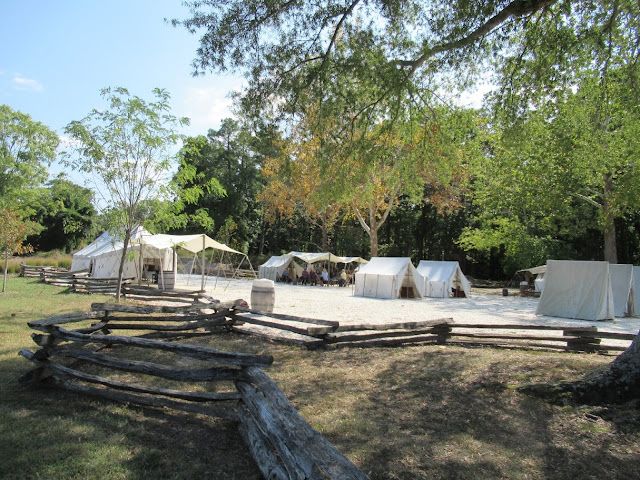Our first stop this morning was the Public Hospital in Colonial Williamsburg. The "Public Hospital for Persons of Insane and Disordered Minds" was the first building in North America devoted solely to the treatment of the mentally ill. The first patient was admitted October 12, 1773. While the portion of the museum that houses the “Public Hospital” is quite small and limited to just a few rooms and displays, it was still interesting.

By the theories of the day, mental illnesses were diseases of the brain and nervous system, and the mentally ill chose to be irrational. Treatment consisted of restraint, strong drugs, plunge baths and other "shock" water treatment, bleeding, and blistering salves. An electro-static machine was installed. Between 1773 and 1790, about 20 percent of the inmates were discharged as cured.




Most of the museum is new construction and an art museum featuring not just paintings, but furniture and artifacts. We took a 30-minute guided tour focusing on George Washington which was quite interesting.
From Colonial Williamsburg we headed north to Yorktown to visit Fort Monroe and the Casemate Museum. Fort Monroe was decommissioned on September 15, 2011. On November 1, 2011, portions of Fort Monroe were designated as a national monument. We stopped and walked along the boardwalk and saw the battery area that was in use until the 1940s.



From Colonial Williamsburg we headed north to Yorktown to visit Fort Monroe and the Casemate Museum. Fort Monroe was decommissioned on September 15, 2011. On November 1, 2011, portions of Fort Monroe were designated as a national monument. We stopped and walked along the boardwalk and saw the battery area that was in use until the 1940s.



Continuing, we toured the Casemate Museum.

There were great displays and signage outlining the events from the Revolutionary War through the Civil War and the players involved.

Although it is now a private residence, Robert E. Lee was stationed here at Fort Monroe before the Civil War.


President Lincoln even stayed at Fort Monroe!




President Lincoln even stayed at Fort Monroe!


From Fort Monroe we headed on to Yorktown Waterfront where we went to see the Bobby Blackhat Band. It was a free, outdoor concert along the York River. We walked along the boardwalk before the concert and saw a large sailing ship.


It’s been a great week and we have had a great time, but it’s time to head home until the next trip!










































